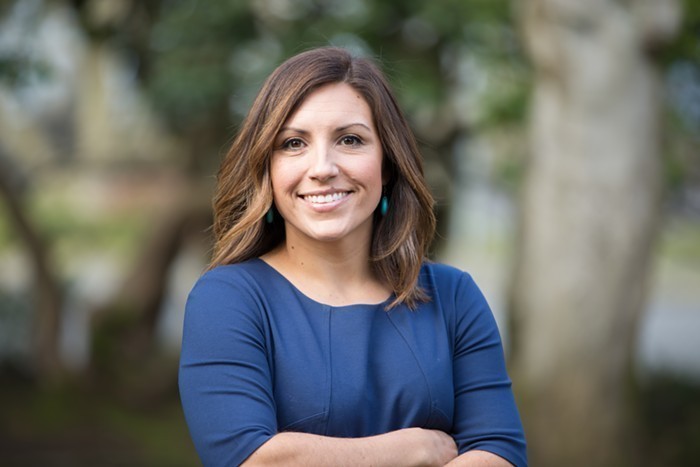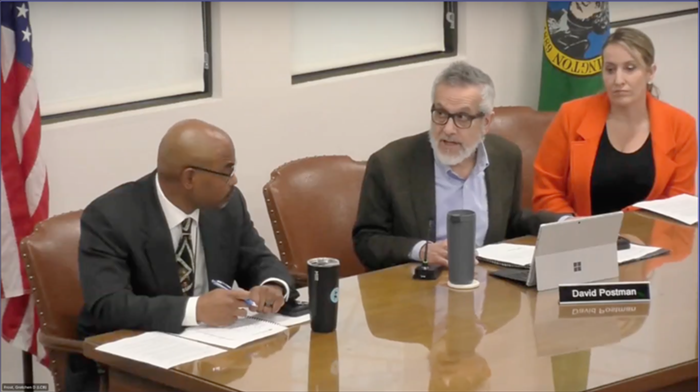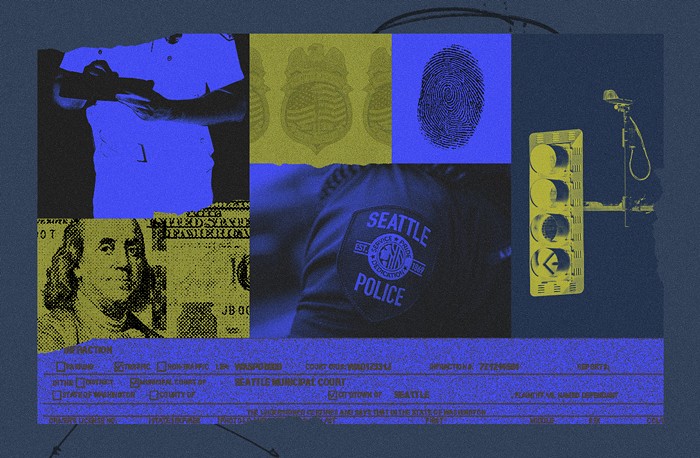It's on.
Mayor Greg Nickels's campaign to replace the Alaskan Way Viaduct with a still-unfunded, $4 billion-plus cut-and-cover tunnel began in earnest at a council committee meeting this Monday, March 13, when Deputy Mayor Tim Ceis eviscerated the state's "aerial rebuild" viaduct alternative—essentially a larger, blockier new viaduct—calling it monstrosity that would cast a giant shadow on the waterfront and eliminate drivers' views. His arguments echoed the mayor's own criticism of the rebuild option, which Nickels has taken to calling "the Big Ugly." In November, the city will hold an advisory election on whether the state should rebuild the viaduct or replace it with a tunnel.
"The rebuild would have greater width and greater mass than the existing viaduct, and I think that's something the public doesn't realize," Ceis told the council. Indeed, the rebuild would be 50 percent wider and far bulkier than the current viaduct, which doesn't meet minimum traffic-safety and earthquake standards.
For Nickels, the tunnel is both an easy and tough sell: Easy because the tunnel (in the few drawings they've released, at any rate) looks much better than the big, blocky replacement viaduct. And tough because the mayor is still at least $1 billion short of the $4 billion-plus needed to build the tunnel, and the state has indicated that it doesn't plan to contribute more than $2 billion toward the viaduct replacement. Current funds are enough to pay for the rebuild, making it an attractive option in an era of rampant cost overruns on megaprojects like the viaduct.
Earlier this month, the state legislature set a January 1, 2007, deadline for the mayor to come up with a funding package to pay for the viaduct replacement. On Monday, Council Member Peter Steinbrueck was skeptical as Ceis pitched the mayor's tunnel proposal, noting that the city "will not have full and complete and solid information" by November's election. "Given that today the funding gap is as much as a third [of the total project cost]," Steinbrueck said, "how can we ask voters to approve it?"
Steinbrueck dismissed Ceis's contention that the legislation passed this month allows the mayor to use both secured and "anticipated" funding, such as future regional dollars, tolls, or special taxes, to close the gap. Steinbrueck called those options "nonanswers," adding, "There will be a funding gap of $1 billion or more come November, with no commitment of where that money will come from. I just want to see a real alternative."
Amid all the jousting between tunnel and rebuild supporters, a third option, one supported by three council members, plus the Sierra Club and the People's Waterfront Coalition, is getting lost. This option, which Steinbrueck calls "surface plus transit," would tear down the viaduct and replace it with a surface roadway, plus transit improvements and fixes to surface streets downtown.
Ceis and State Transportation Secretary Doug MacDonald were adamant, however, that the state legislation only "allows" the city to put two alternatives on the ballot, the tunnel and the rebuild. "There has been some question about other alternatives that might be put on the ballot, but it's clear that the legislation as written is intended to include the rebuild and the tunnel and no other alternatives," Ceis said Monday. Politically, limiting the vote to two alternatives should benefit tunnel backers: Given the choice between the "Big Ugly" and a tunnel that buries part of the viaduct underground, it seems likely that voters will choose the tunnel.
Sitting in his office minutes after the meeting wrapped up, Steinbrueck was livid at Ceis's implication that legislators could dictate the contents of a city ballot measure. "Is this the beginning of a new trend—legislators dictating what municipalities can put on the ballot? They cannot tell us what to do," Steinbrueck said. "We can ask our citizens for advice on anything we want."
The campaign is just beginning for the mayor, Ceis, and their pro-tunnel cohort, which now includes the Transportation Choices Coalition, People for Puget Sound, Allied Arts, and the Downtown Seattle Association. Last week, members of all those organizations were invited to an afternoon "waterfront messaging meeting" with Ceis, SDOT spokeswoman Patrice Gillespie-Smith, and Sally Clark's staffer (and Allied Arts president) David Yeaworth to strategize pro-tunnel campaign messages.
barnett@thestranger.com
















